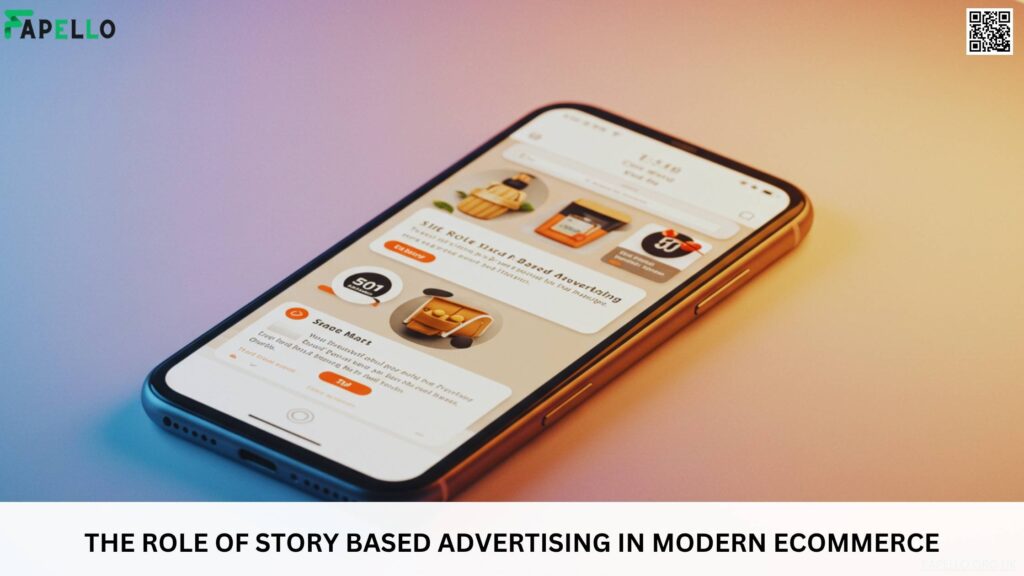Digital marketing continues to evolve with mobile platforms and visual formats becoming central to how users engage with content. One of the most effective formats to emerge from this shift is the story format. Initially created for casual sharing on social media, stories are now used by brands to highlight products, increase engagement, and drive conversions.

This article examines how stories function as a marketing tool, why they are gaining popularity among advertisers, and how businesses can use them effectively to showcase product catalogs in a relevant and scalable way.
Why Stories Work in a Mobile First World
Stories are short visual content pieces designed for mobile screens. They appear at the top of apps like Instagram and Facebook, capture attention instantly, and disappear after a limited time. Their fleeting nature creates urgency and encourages more frequent viewing.
Unlike traditional ads, stories occupy the full screen without distractions. They support interactive elements such as swipe actions and clickable stickers, allowing brands to guide users toward products or landing pages directly from the content. This blend of visibility and interactivity makes stories ideal for product discovery.
The story format also enables brands to connect with users in a way that feels natural to the platform. By blending into the environment of social content, stories reduce friction and enhance user engagement.
Use stories to showcase your product catalog
A growing number of businesses are now turning to solutions that allow them to present dynamic product selections through automated story formats. One effective approach is to use stories to showcase your product catalog using a tool that links creative templates with real time product feeds.
This method enables companies to display multiple products in story format while adjusting the content based on user behavior and available inventory. The result is a scalable system that delivers personalized and visually consistent product promotions to targeted audiences.
By integrating product data directly into the story format, brands ensure that pricing, images, and availability remain accurate while reducing the need for manual ad creation. This saves time and improves relevance.
Benefits of Using Story Ads for Product Promotion
Story based product ads offer several distinct advantages
- High visibility due to top of feed placement
- Enhanced engagement through full screen visuals and interactive elements
- Personalization through data driven content delivery
- Greater creative flexibility with animated templates and branded design
- Real time updates via product feed integration
These benefits help marketers reach audiences more efficiently and with less creative fatigue. Instead of producing dozens of individual ads, one story template can support thousands of product variations automatically.
Steps to Implementing Story Based Product Ads
To get started, businesses need a structured and up to date product catalog. This catalog should include essential information such as product names, prices, availability, and image links.
The next step involves creating a reusable story template. The template should be visually appealing and consistent with the brand identity. Space should be reserved for product visuals, pricing, and calls to action that encourage interaction.
Once the catalog and template are ready, advertisers can connect them using an automation tool that supports story format output. The tool will then populate the story ads dynamically and deliver them to audiences based on targeting preferences.
This setup allows brands to run large scale campaigns while maintaining creative control and message relevance.
Challenges and How to Address Them
Despite the advantages, there are some challenges when working with story based ads. Creative fatigue can occur if templates are not refreshed regularly. Users may lose interest if they see the same format repeatedly.
To address this, marketers should design multiple template variations and rotate them based on product category, season, or audience segment. Testing different formats also helps identify which creative approach drives the best results.
Another challenge involves maintaining the quality of the product feed. Errors in pricing, broken image links, or incorrect availability data can disrupt the delivery of the story content. Regular feed audits and syncing with inventory systems help minimize these issues.
Measuring campaign performance is equally important. Key indicators such as view completion rate, swipe activity, and product clicks provide insights into what resonates with users and what needs improvement.
Trends Shaping the Future of Story Advertising
The use of stories in digital marketing is expected to continue growing, with new features and tools enhancing their effectiveness. Interactive elements such as real time polls, embedded product quizzes, and augmented reality effects are making story ads more engaging than ever.
Artificial intelligence is also playing a larger role. Algorithms can now analyze user behavior and optimize which products or templates are shown to different segments. This improves both efficiency and user satisfaction.
As data privacy rules evolve, story ads offer a less invasive way to deliver personalized content. Because they rely on first party data and catalog feeds, they remain compliant while still being highly relevant.
Conclusion
Story based advertising is quickly becoming a core tactic for modern marketers. It aligns with mobile usage habits, offers immersive and interactive experiences, and enables automated personalization at scale.
By adopting solutions that allow you to use stories to showcase your product catalog, brands can transform how they present their products to consumers. This approach improves marketing agility, reduces creative workload, and enhances the shopping experience for users.
For businesses aiming to stand out in a competitive digital space, the story format offers a timely and effective way to connect with their audience.






